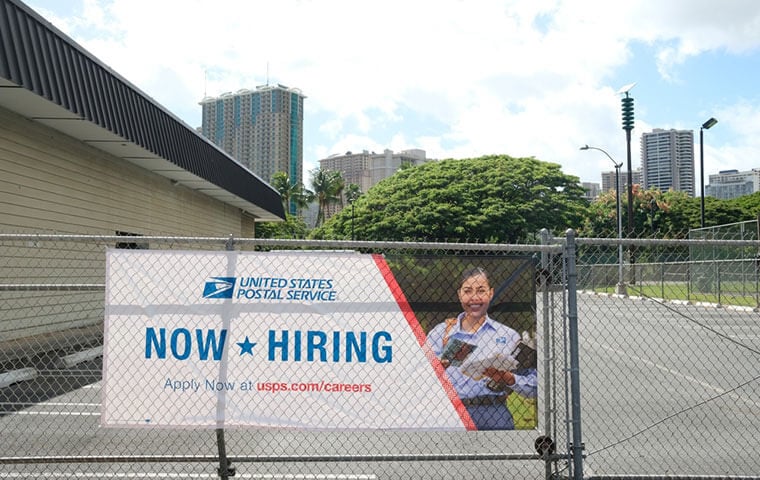 The percentage of those still on the job after one year fell from 47.3 to 43.2 percent over 2023-2024. Image: image_vulture/Shutterstock.com
By: FEDweek Staff
The percentage of those still on the job after one year fell from 47.3 to 43.2 percent over 2023-2024. Image: image_vulture/Shutterstock.com
By: FEDweek StaffThe USPS has made some improvements in its hiring practices in recent years but it still faces challenges in recruiting—as well as a pending exodus of older employees to retirement—that adopting best practices from the private sector and other national mail services could help address, says an IG report.
“The Postal Service struggles to retain its pre-career employees and attract enough applicants to fill some open positions, as its workforce continues to age and approach retirement,” it says. “Between fiscal years 2021-2023, over half of the agency’s job postings for pre-career positions did not receive any applications, 18 percent of newly hired pre-career employees did not show up for orientation or their first day of work in FY 2023, and one-third left the agency within their first 90 days.”
The percentage of those still on the job after one year fell from 47.3 to 43.2 percent over 2023-2024. Meanwhile, 18 percent of the workforce is currently eligible to retire, another 19 percent will be eligible within the next five years and 53 percent will be eligible to retire within the next decade.
The report cited steps USPS has taken in recent years including shortening the hiring process for most pre-career bargaining positions by eliminating interviews and relying on a virtual assessment instead, centralizing the hiring process, and allowing employees to begin work with an interim background check. “Further, USPS implemented changes to its onboarding program to improve retention, including requiring supervisors to hold regularly scheduled performance discussions, establishing formalized mentorship opportunities, and enabling some new hires to shadow a more experienced employee for one day,” it said.
However, it said the USPS could do better in areas such as telling the organization’s story, including by emphasizing its mission and service to the public. “While a subsection of the Postal Service’s hiring website references how employees serve the American people, other organizations highlight their mission more prominently on the main page of their hiring websites and in their job announcements,” it says.
It also said that for example the USPS could benefit from better emphasizing the full range of employee benefits it offers; by better communicating job expectations—such as work scheduling flexibility, or a lack of it—to prospective applicants; and by partnering with organizations such as high schools and colleges, businesses that are downsizing, organizations that help unemployed people, and the military.
Congress Leaving Key Policy, Funding Decisions to the Fall
Guidance on ‘Schedule G’ Stresses Political Oversight
OPM Tells Agencies to Allow ‘Religious Expression’ in Federal Workplace
Agency RIFs, Reorganizations Starting to Take Shape
Order Formally Launches ‘Schedule Policy/Career,’ Adds Category of Appointees
Court Allows Order against Unions to Remain, but Congress Eyes Stepping In
See also,
Top 10 Provisions in the Big Beautiful Bill of Interest to Federal Employees
A Pre-RIF Checklist for Every Federal Employee, From a Federal Employment Attorney
Work Longer or Take the FERS Supplement Now: Which is Better?
Doubling Your TSP (C Fund vs G Fund)

